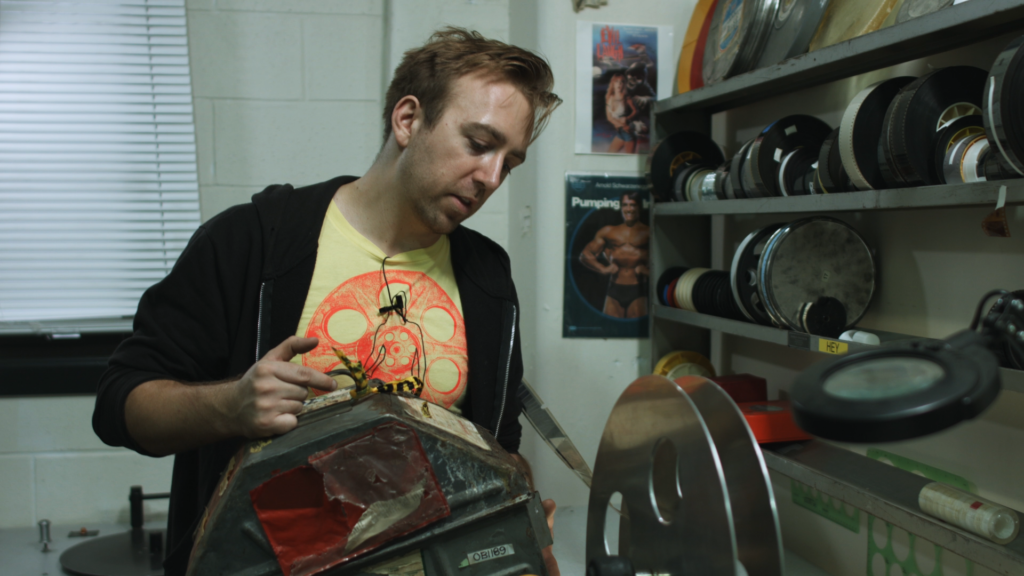Silo Sale

Ed Peden sits at his kitchen table, a table buried beneath the rolling Kansas prairie a few miles west of Topeka, a table that, like Peden’s queen-size bed, his sofa and his side-by-side toilets, is surrounded by at least eighteen inches of reinforced concrete.
But Peden is not ready for war. U.S. planes are aloft over Afghanistan as Peden talks of a “golden moment” during which America could still make peace.
“I really do feel the football cowboy mentality is carrying the day,” he says. “Once we strike a blow and draw blood in violence, many options will have been lost forever.”
His answering machine blinks urgently. Peden is the world’s foremost salesman of Cold War missile silos, and he may well be in a sort of “golden moment” himself as Osama bin Laden piques interest in homes and buildings tough enough to withstand the Saudi’s suicidal minions.
Peden and his wife, Dianna, live in a vast bunker that in the early 1960s housed a four-megaton Atlas E missile with a destructive force more than 300 times greater than the blast at Hiroshima. “Overkill” describes not only the warhead’s capability but also the absurdly massive underground complex, built by a Sputnik-panicked military that would later realize that 35 acres were a bit much for a single missile.
From 1961-’65, six-man crews from Forbes Air Force Base would rotate into this bunker for 24-hour shifts. In what is now the Pedens’ living room, the men kept vigil over a control panel with the power to eliminate cities. The panel has been replaced by a back-lit stained glass arch and a wooden plaque reading “Love All.”
Peden bought this place for $40,000 eighteen years ago, when the fear of the day was still Russian missiles, not crop dusters spewing anthrax, although it’s a safe bet he’s seen an aerial applicator fly by once or twice. Peden had lived only a few miles from the two-building underground complex and first visited the site out of curiosity. Groundwater filled much of the bunker, and Peden would canoe and swim in the dark, cavernous rooms.
Peden’s swimming hole had long ago been stripped of valuable metals that might be recycled, so he easily bought it from the salvage company that had bought it from a school district that had got it from the federal government as surplus.
Peden pumped out the water, cleaned up the muck and tore out the dissolved wall board, but spiritual dirt remained from the facility’s years as a threat of war, he says. “It was a heavy environment,” Peden says. “We came in and have changed the energy of the place.”
A little at a time, the Pedens have transformed their home from military to middle-class with a hippie bent: hanging basket chairs, rugs and birds’ wings mixed with sectional couches.
The Pedens’ living area in the command building connects to the launch pad and missile service building through a long corrugated-metal tunnel sealed by two blast doors. This second building housed the missile, which lay on its side awaiting World War III.
Peden’s transfiguration from silo dweller to silo salesman occurred six years ago, when he got a call from the owners of another 1960s-era missile site at nearby Wamego. Their partnership and dreams of silo reclamation were dissolving, and they asked Peden if he could find a buyer who would pay more than the $30,000 they owed the bank.
Peden found someone willing to pay $200,000. After that sale, Peden and some partners tracked down the 129 owners of other first-generation missile sites across the country. His get-to-know-you chats about silos and the Cold War would eventually get down to business. Peden paid $1 or $10 — never more than $100 — for one-year options to buy at a set price. He then found buyers willing to pay more and kept the difference. So far, he has sold 28 silos.
He has nine on the market now. The Wamego site is up for sale again, as are silos in Central, Kansas; Winters and Shep, Texas; Ellenburg, Brainardsville and Saranac, New York; Creta, Oklahoma; and Roswell, New Mexico.
Their price tags range from $133,000 for an Atlas F site and “repainted” Quonset hut on 22 acres near Creta to the $1.7 million being asked for the immaculate site at Saranac with an accompanying airstrip.
Potential buyers can view the silos on Peden’s web site (www.missilebases.com), a full-color, photo-filled combination of real estate happy talk and technical military jargon — a marketing pitch seemingly designed to snag a survivalist Martha Stewart.
Of the Roswell site, the narrative brags, “The utility tunnel and second blast lock area have also been refurbished with many new upgrades. The launch control center has also been stripped, cleaned and awaits your creative design.”
As for the jewel at Saranac: “We took the end result of $18 million in government wasted spending (1958 dollars) and turned it into a rare and unique private airport getaway … one that will also serve as a survival shelter in the event of nuclear or germ warfare…. Unlimited possibilities!”
The ads have generated more than sixty calls and e-mails since Sept. 11 — about five times the usual number, Peden says.
One woman called from New York the day after the plane crashes. Another called from Washington, D.C., seeking a new home for her family of four, including two young children. The woman asked specifically about the airflow in the structures. Peden reassured her that the air intake vents could be closed off automatically. “She’s trying to convince her husband,” Peden says.
Two calls have come from businessmen, one in Florida, the other in the United Kingdom. Both propose to open document-storage facilities, an idea triggered by the confetti that drifted down on Manhattan from the burning World Trade Center.
Rumors of war are good for Peden’s business, so his peace monologue drips with irony. The 54-year-old former junior-high teacher believes the kamikaze hijackings of September 11 should be seen as crimes rather than acts of war. He makes his point with anecdotes from schoolyard fights and psychological therapy sessions. His delivery is breathy and preacherlike in its rising and falling pitch and punch on meaningful words.
Occasionally, Peden has a congregation on hand. He hosts gatherings of like-minded souls who beat on his collection of peace drums and dance in the bunker. Other days he meditates and retreats to his circle of sixteen stones that he believes serves as a connection to a spiritual world.
As Peden pounds a few rhythms on a drum, the noise sinks into his many rugs, including a small rectangular Afghan war rug woven with the images of helicopters and a missile-like mosque. The drum room is cavernous: 54 feet by 54 feet with a 15-foot ceiling. It once held two giant diesel generators. Had they been asked, the throbbing generators would have provided the power to slide back the 400-ton cover from the missile, lift the missile to its erect position and ignite Armageddon.




